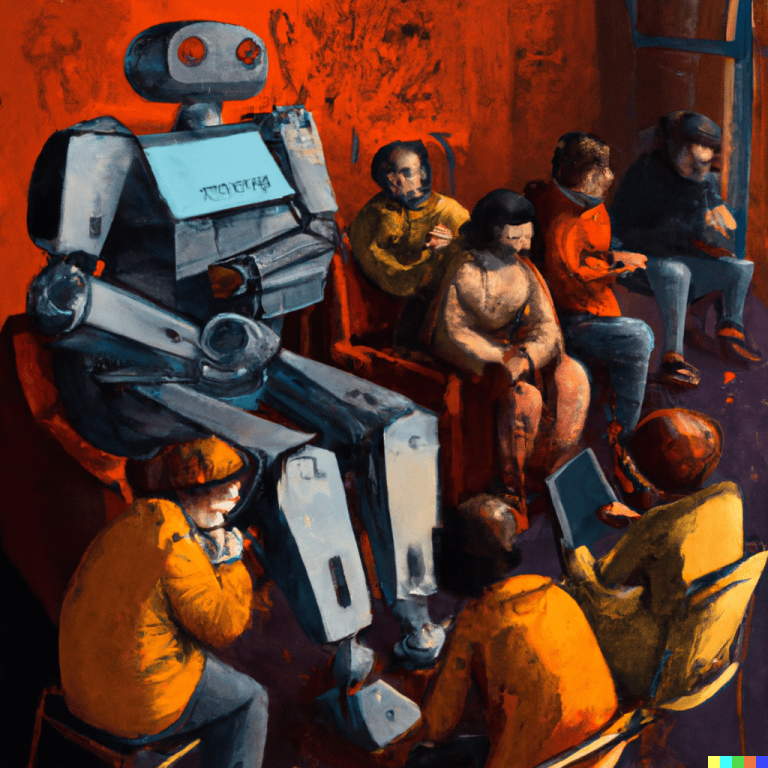Chatbots in Higher Education (Part II)
19 March, 2019
This is the second part of two posts about the roll-out of chatbots in higher education. You can read the first by following this link.
The added value of chatbots
It’s now possible to have devices in our homes that we can give voice orders in order for them to carry out tasks. Amazon has Alexa, Google has Google Home. We can tell the assistant, “OK Google, turn on the dining room light”, and it will turn it on.
That’s a lot of fun on the first day, but by the second day, you get home tired and you’re not in the mood to talk and it’s much easier just to flick on the light switch yourself. We’re all driven by the law of minimal effort, and some things are easier to do than talking.
But, if we could say to the chatbot “OK Google, I’m off to bed to read for a bit and then sleep”, and the device turns off all the lights in the house, turns on the bedside lamp, switches the heating off, puts your mobile on silent, and sets the alarm clock to come on the next morning at a time that lets me get to the meeting I’ve got first thing in good time, maybe then we’d use it.
A device of this type is, in fact, a personal assistant, which uses a chatbot as a communication channel, but it can also use others. An app, or a website for example.
A chatbot could be another communication channel with the University. By contrast, a personal assistant could revolutionize the University. Imagine a chatbot that we could ask the following questions:
- What course should I enrol on next year?
- Which classmates would it be good to do the next group project with?
- At my present study pace, will I be able to pass all my courses? Or would it be better to leave one or two out?
- What materials do I need to consult for the next activity?
The limitations of chatbots
Could a chatbot answer the questions we asked above? Yes, it could, providing it had access to this information. We first have to prepare the information so it can give it to the student.
Following the example of the Google assistant, this will only be able to do what we ask if we have all the lights at home connected to Wi-Fi, as well as everything else we want to control using the assistant. It’s frustrating having Google Home and realizing that the only thing you can ask it to do is play songs on Spotify, and it does that slower than if we used the web ourselves.
Something similar occurs at universities. Initially, they’ll have a chatbot that will provide access to a series of very limited services. To improve their capabilities, they’ll have to work over the coming years to achieve what they haven’t yet managed to achieve: gather data, connect them and make them accessible. And the question that inevitably arises is: if they haven’t done it yet, what has to change for them to feel the need to do it? We’ll try and answer this in the next point.
Why are online universities interested in chatbots?
Here, we’ll try to answer the question we posed earlier: what is it that will make universities do what they haven’t yet managed to accomplish? Because the mere existence of chatbots doesn’t seem to be sufficient motivation.
Personalization
In today’s world, many tasks are becoming automated. Robots already do a lot of jobs, and it’s foreseeable that in the future they’ll do even more. In this context, the university as a “factory of workers” no longer makes sense. We need to stop creating average workers and start creating people who can do “what robots cannot do”. In short, we need workers that are more human.
Humans cannot be mass-produced; you cannot use a mould so they all come out the same. On the contrary, we need to use our differences as a starting point and then use education to enhance and fully take advantage of our skills. Hence the need for personalization. But personalization is not sustainable with current resources. It doesn’t appear possible to go back to tutors with a single student, or even to a teacher with a small group of students.
It’s here that artificial intelligence, with the chatbot as a vehicle, appears to be able to offer a solution that seems a priori to be contradictory: to provide standard personalized education.
Engagement
One of the problems facing online universities is withdrawal: students who leave their course before finishing it. This is even more exaggerated in the case of MOOCs, where just a minuscule percentage of the people who enrol actually complete the whole course.
In this context, virtual assistants are seen as a possible solution. The idea would be to design an assistant that helps the student overcome the more difficult moments of their course, either by helping them answer queries of any sort, or by encouraging them when they need it, making them see whether their performance is in line with what they need to do to pass and chasing them up when they don’t keep up the pace.
Conclusions to parts I and II of this post
In these two posts, we’ve started talking about chatbots, we’ve continued by discussing artificial intelligence and we’ve finished by talking about personal assistants. This is why chatbots are, in fact, irrelevant and AI a pipe dream. The personal assistant, by contrast, can develop a new role that could change education.
At the UOC, we have a reference video where Isaac Asimov explained how the computers of the future would enable a style of teaching adapted to every single person’s specific needs.
The future is on its way. Personal assistants will be increasingly more powerful and have access to more data. When databases can be connected to each other, these agents will be able to predict our actions better than we can. They’ll be able to “advise us”, act as tutors, trainers and study companions. That’s not to say they’ll act as professors, because professional experience and analytical skill will continue to be a trait that differentiates humans from machines.
The question we ask ourselves is the following: who is in a better position to achieve this vision of the future? Universities? Or the large technology firms?
In other words: who will make the first truly functional teaching assistant? Google? Or Harvard? Or an alliance between the two? Or another player we don’t yet know about?
At other universities like ours that want to find an answer to these questions, some of the steps we can take to answer them are:
- Create alliances with a technology firm.
- Recruit experts in learning analytics and data scientists and give them a key role in decision making.
- Adapt our technologies for the systematic and structured gathering and processing of data following our experts’ recommendations.
- Know our students’ needs well and find out how a virtual assistant could answer them.
- Start working on pilot trials with students and professors.
- Seek ways of scaling the pilot trials.
At the UOC, we are already taking some of these initial steps and we hope to be able to draw some conclusions over the coming months.
Pic by Thomas Kolnowski via Unsplash





